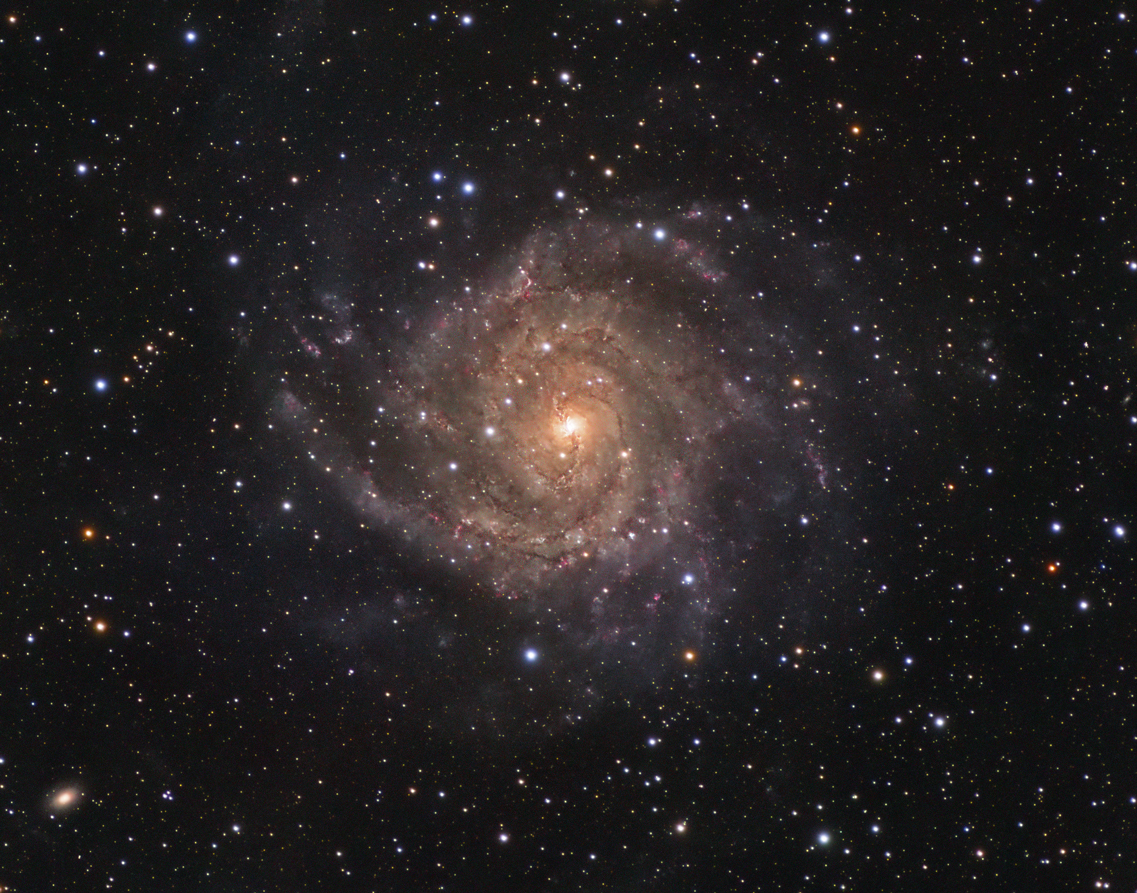IC 342 (The Hidden Galaxy)
Characteristics:
RA (J2000): 03h 46m 48s
Dec (J2000): +68 degrees 05' 44"
Position Angle: 0 degrees
Description:
Located
in the constellation Camelopardalis, IC 342 is a nearly face-on spiral
galaxy located close to the plane of the Milky Way, causing light from
this target to be severely attenuated by intervening dust. The
name "Hidden Galaxy" attests to the faint appearence of this galaxy,
especially for visual astronomers, although this target is similar in
angular diameter to other more familiar galaxies such as M81 and
M101. Blue light from IC342 is attenuated by passage through the
Milky Way's dust, resulting in an overall reddening of its appearance
as seen in the image above. The spiral arms of IC342 contain many
HII regions, indicative of recent star burst activity. Please
check out the larger image sizes in the links abovc. More
detail about this interesting galaxy may be found on Rob Gendler's
website.
Photographic
Details:
Dates: November 10 thru 16,
2023.
Scope: Takahashi
FSQ106 at f5 on the Takahashi NJP
Mount.
Autoguider: ASI178 autoguider with SvBony 30mm guidescope, focal length
120mm.
Camera: ZWO ASI294MM at -10C,
with
7 position ZWO filter wheel. Pixel size is 2.3 microns (Bin 1x1),
yielding an image scale with the FSQ (530mm focal length) of 0.90
"/pixel (well matched for my seeing of 3 arcseconds).
Camera gain set to 50 (e-gain
2.13 electrons/ADU), offset 25.
Read noise at this gain level was 2.18 electrons rms.
Filters: Baader LRGB
filters; 2 inch.
Image acquisition
software: MaximDL for camera control and autoguiding; CCD
Commander for automation.
Exposures: Total
exposure 14 hours (LUM 7 hours, 60 second subs; Red 2 hours, 120 second
subs; Green 2 hours, 120 second subs; Blue 3 hours, 120 second subs ).
Processing:
Calibration,
integration, Spectrophotometric Color Calibration (SPCC), deconvolution
(BlurXTerminator), noise reduction
(NoiseXTerminator) in
Pixinsight; subsequent processing in Photoshop.
Please
note: Graphics on this website may not be reproduced without
author permission.
Back to Galaxies
Home



